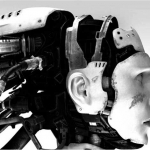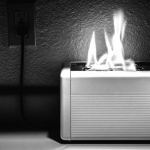Just under a week ago, my friend Francesco Rossetti, a vulcanic and ecletic italian orthodontist, wrote me a whatsapp message asking some information about his new idea for a simple mouthguard and regulatory compliance.
Here, I try to answer to his question and explain some regulatory interpretations about borderline products on single market (EU) using what I call, from today, the “mouthguard regulatory paradigm“.
With the increase in the practice of impact high risk sports and the engagement of a wide variety of practitioners in these activities , the use of mouthguards is globally spreading to prevent injuries to the teeth and mouth in case of shocks to head and dentofacial region.
Many manufacturers, or importers (or potential authorized representative) have difficulty in interpreting whether or not their product would be considered a medical device within the terms of the Medical Devices Directive 2007/47/EC.
Firstly, medical devices must have a ‘medical purpose’ which is determined by the definition of a medical device. They must also act primarily in a way that is not metabolic, immunological or pharmacological. Should they function in any way that is metabolic, immunological or pharmacological, in conjunction with having a medical purpose, they are likely to come within the remit of the regulations covering medicinal products instead.
Secondly, products falling outside the scope of the regulations for medical devices may still be covered by the Consumer Protection Act and must be safe for their intended purpose.
Thirdly, not all equipment used in a healthcare environment or used by a healthcare professional will be considered to come within the definition of a medical device.
Finally, as medical devices are considered to be specifically intended for a ‘medical purpose’, products that do not have such a principal intended purpose are not considered to be medical devices, even if they may be considered to be used for the prevention of disease as a secondary purpose.
So, products that have a multiple purpose, which may occasionally be used within a medical environment, are not normally medical devices, unless a manufacturer ascribes a specific medical purpose to such products (i.e. multipurpose computer)
In general, products for sport or leisure purposes are not considered to be medical devices (i.e. gym equipment that contains within it an element that measures heart rate and specifically placed on the market not for this purpose is not a medical device because its primary purpose is as a piece of fitness equipment, not principally to measure a physiological function).
However, in some cases, products aimed at sports people may be considered to be medical devices when pecific claims are made for the treatment of pain or injury and the product acts in a physical manner.
Some products may appear to have a medical purpose, but in fact are designed to protect the user. Such products are usually considered to be PPE (personal protective equipment) rather than medical devices depending upon the intended purpose.
Mouth guards are only medical devices when intended for specifics ‘medical’ purposes, as a retainer following orthodontic treatment or for use in the treatment of sleep disorders characterized by pauses in breathing or instances of shallow or infrequent breathing. In most other cases these products will be personal protective equipment, including those intended for sports purposes.
Custom-made mouthguards
Custom-made devices are usually one-off devices made specifically for one individual patient on the basis of a written prescription from a healthcare professional. They are covered by the requirements of Article 11 (6) and Annex VIII of the MDD in terms of their conformity assessment. Examples of such devices are intermediate products as dental appliances, prostheses and hearing aid inserts may be considered as medical devices where they are specifically intended for these types of custom-made devices. This would include items such as dental alloys, dental ceramics, modular components for prostheses etc.
MEDDEV S/02/97 Custom-made mouth guards; Classification
Custom-made mouth guards are only medical devices if they were to be used for medical purposes.
Meeting NB-MED on 04./05.02.97
(NBRG-Meeting on 26.06.97: No further action required.)
In particular, in the new medical Devices Directive 2007/47/EC where a device is intended by the manufacturer to be used in accordance with both the provisions on personal protective equipment (PPE) and medical devices directive, the relevant basic health and safety requirements of PPE Directive 89/686/EEC shall also be fulfilled. In such cases the product should be CE marked (only if mass produced) as a medical device (MD Classification: Rule 5 , Invasive in body orifice – not surgically-, short term use, , Class I).
Instead, according to the 2007/47/EC Directive custom-made medical devices definition
- manufactured specifically in accordance with a written prescription of a registered medical practitioner, or other person authorised to write such a prescription by virtue of his professional qualification, which gives under his responsibility, specific characteristics as to its design;
- and intended for the sole use of a particular patient,
- not mass produced
they don’t need to be EC marked when they are first placed on the market and/or put into service. However, they must meet the relevant provisions of the Directive but don’t require the intervention of a notified body.
It is clear from Article 1(6) MD Directive that products which, according to the intention of its manufacturer, are to be used as a medical device and as a PPE at the same time must fulfill the relevant essential requirements of both directives.
Regarding products for sports (PPE Directive applies to products intended for use in domestic, leisure and sports activities, as well as for professional use) when devices are adapted to the wearer it is commonly accepted that that they have to be adapted to a specific intended user to ensure perfect fit and functionality. This means that these PPE are unique pieces such as custom made mouth guards.
In a nugget
In 1890, Woolf Krause, a London based dentist, invented the athletic mouthguards, also known as “gum shields” because of the gutta-percha material (called also balata, a natural thermoplastic). His focus was to protect boxers from lips laceration.
Some years after Krause’s son Philip, refined the design and began making the shields from vella rubber, softer than gutta-percha, similar in shape to what is available today.
Thomas Carlos, an American dentist from Chicago, manufactured the first properly fitted mouth guard in 1916.Mouthguards become prevalent in 1927 during a boxing match between Mike McTigue and Jack Sharkey. McTigue was clearly winning the fight, however, a chipped tooth severely cut his lip and forced him to forfeit the match. From then on, mouthguards become commonplace for boxers and also opened the possibilities for mouthguard use to flourish.
Three years following the infamous McTigue/Sharkey fight, mouthguards found its way into dental literature. Dr. Clearance Mayer, who was a dentist and also a boxing inspector, wrote about how custom mouthguards could be created from impressions using wax and rubber. He also suggested using steel springs to reinforce the materials.
In 1947, a major breakthrough was made when Los Angeles dentist Rodney O. Lilyquist used transparent acrylic resin to form the first acrylic splint.
Dick Perry, a UCLA basketball player, was the first known athlete to use an acrylic mouthguard.
For decades, mouthguards remained largely unchanged. It was not until the early 1960s that a Canadian pediatric dentist named Arthur Wood, appalled by the number of dental injuries he saw in hockey players, developed a “teeth guard” for which he became known as the father of the modern mouthguard. Since then, mouthguard materials, fabrication techniques and subsequent fit have been improved to increase both protection and comfort.





